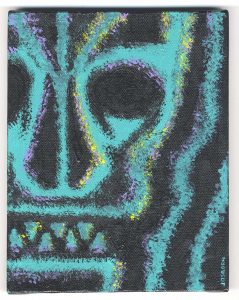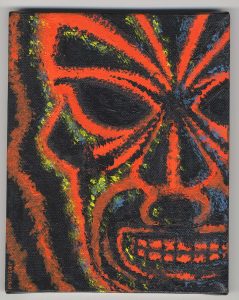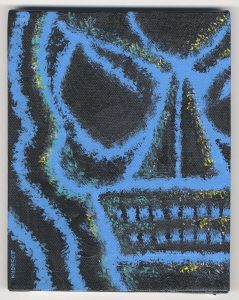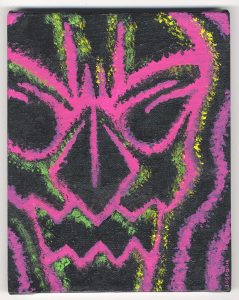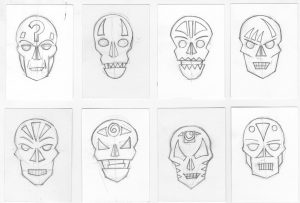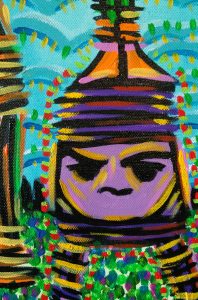For years the Winsor Newton Series 7 Number 3 brush has been my go-to inking brush. It’s the high end of watercolor brushes and the brand has served me well for many years. The main problem with it has alway been that sable hair watercolor brushes aren’t made for India ink. Unlike watercolor the India ink eats away at the brush until it ruins it. At some point the brush will no longer hold a point like it’s supposed to and it becomes useless to me. Well, not quite as useless as it used to be as I’ve developed a technique to draw in ink with an old battered sable brush but that doesn’t help me if I want to use my normal inking technique. For that I need a good brush that comes to a point.
The second problem with a Series 7 brush is that it’s expensive. Then around 2014 through 2015 there was a shortage of the brushes and the cost rose even more. The price on a number three used to be around thirty dollars at full retail but I could often find them for fifteen to twenty dollars. Not too bad. I could even find some of the second tier sable brushes for twelve bucks a piece. I used to stock up on them when I could.
I’ve been using Series 7 brushes since the early 1990s and I always heard they weren’t quite as good as they used to be. I found them to still be pretty good so I wasn’t bothered about the stories of their decline in quality. After all I didn’t know how good they used to be. Occasionally I’d get a lemon of a brush but that was unusual. In the last decade I’ve heard “They’re not what they used to be” said with increasing frequency and I have to agree with them this time.
I stocked up on some brushes before the shortage and managed to keep going with my ink drawings. Except the last few Series 7 brushes I used weren’t that good and didn’t last very long. They were tough to make come to a point and the point didn’t stay in place very long. Disappointing.
Last year since I couldn’t get any new Series 7 brushes I looked around for some other ones. I ended up finding some cheap sable brushes for around ten to twelve dollars a piece. These ones weren’t even the second tier ones I had bought before (they were out of stock too) but were completely unknown brands to me. They ended up being of varying quality but overall of pretty low quality. They rarely came to a good point and were usually smaller then the same size Series 7 brush. This meant they had fewer bristles to hold the ink and so I had to dip the brush in the ink bottle more often. I don’t think I ever found any of theses brushes to be anything more than merely adequate.
When the Series 7 brushes finally became available again this year I balked at the price. Now the price on them is fifty dollars at full retail and thirty two dollars is the discount price. Ouch. Especially since the quality of the last brushes I bought had dipped. I was disappointed in them at twenty dollars so thirty two dollars was crazy. I decided there was no way I wanted to get one of those. Too much of a gamble. But what to get?
This lead me to try out some synthetic hair brushes. I guess they’re basically plastic bristles but I’m not really even sure what they’re made out of. I have tried synthetic watercolor brushes over the years for inking and have always found them lacking. Usually they did not come to a good point nor did they have very good rebound. That’s when after making a brush stroke on paper the bristles rebound back to their original shape and point. All the synthetic brushes I tried would bend over with the pressure of use and stay bent over. This made them hard to use and I stayed away from them.
Still I’ve kept my eye on the synthetic brushes over the years and would browse them when at an art store. I noticed some of the points looking better on them as the years went by. The one good thing about synthetic brushes is that they’re cheap. I decided to try one of them out and it was only four bucks. Not a lot to lose if it didn’t work out. Beats losing thirty bucks on a bad Series 7.
The first one I tried out I got from my local arts and crafts store. It’s a Simply Simmons Number 4 round with a short handle. I think it was three dollars and change and I got it on sale for half price. I must say I was very impressed by it. It was about the same size as a Series 7 Number 3 but didn’t quite hold as much ink. But it came to a pretty good point and had good rebound. It didn’t have nearly the flexibility of a Series 7 and ended up being more of a liner brush. That’s a brush that makes a good line but it a little more difficult to use when making other sorts of marks. It goes in one direction really well. I made a bunch of drawings using that brush and was happy with it. But I wanted a more versatile brush.
Further searching brought me to another Simmons brush. This time the Robert Simmons White Sable Number 3. It’s called white sable because it tries to mimic actual sable hair with synthetic white bristles. I have to say it does a very good job. The number 3 is smaller than both the Simply Simmons and the Series 7 so it doesn’t hold a ton of ink in its bristles but it has a very good point and very good rebound. Unlike
the other synthetic it’s good at making a variety of marks.
I found myself working very quickly with the White Sable brush. I hadn’t realized how much the not-quite-good Series 7 brushes were slowing me down. I had to spend more time dipping and pointing them than I once did but I really didn’t notice that it added up to so much time. I knew I was going a little slower but chalked that up to getting a little older. Turns out it was a bad brush and with a good one my speed came back.
Overall I’m really happy with the White Sable. I want to try a larger size but besides that I have no complaints about it. I’ll have to stock up.

